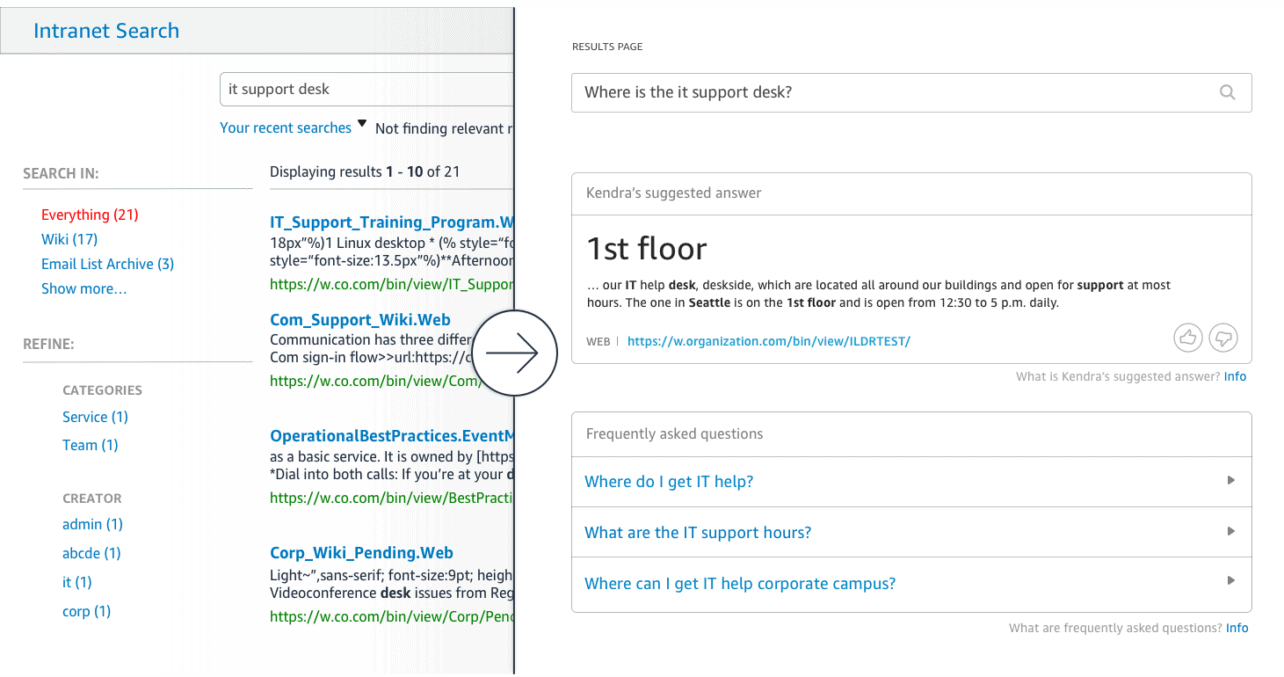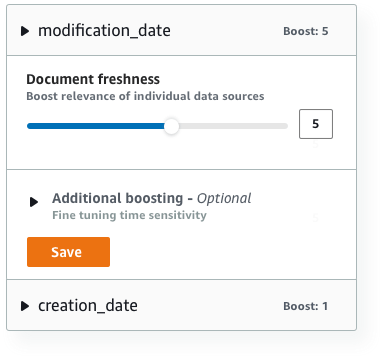During re:Invent, Amazon Web Services (AWS) presented an enterprise search engine that will excite most companies. Amazon Kendra is an application where you, as a company, can connect all your data sources to index and search them. Kendra can then directly answer questions or show search results. The idea is to create a human-like experience in which you get a direct answer to your question.
With Amazon Kendra, Amazon wants to solve a major problem that also bothered the company itself, namely providing answers to frequently asked questions to the staff. Within Amazon, there are a lot of data sources with information that is not easily accessible. Data is stored in SharePoint environments, FAQs, portals or HR applications or simply in Salesforce. The questions of the staff vary widely. Sometimes, you just want a quick answer.
With Amazon Kendra, the experience and availability of information should improve significantly. For example, Kendra can search all kinds of different data sources, and it understands the context of information, but also of the question asked by an employee. This allows it to provide a faster and more effective answer.
Where is the cafeteria?
For example, if someone wants to know where the cafeteria is in an office building, it must be possible to ask the question in the first place. Then Kendra can give an immediate answer: on the second floor and out of the elevator to the left. With a link to the FAQ where the information comes from.
With this answer and search results, other relevant searches can also be shown. What does the menu look like? What are the opening hours? Is there food available for people with special diets or religious restrictions?
Of course, it doesn’t have to be a cafeteria. It can also be the IT Service Desk, like in the example of Amazon. These are simple examples, but of course, it could become much more complex in the future. That’s where the potential lies.

Indexing all business documents including legal sets
With Amazon Kendra, it is possible to index all business documents that are stored on a file-server or in an S3-bucket. For example, all employee documents stored on the central file server can also be indexed. Of course, it is not the intention that all documents of a particular employee are also accessible to all colleagues. This is why the rights to documents are also included. If a file is only accessible to the employee who created the file, it will be displayed in the search application for that specific employee, but not for other employees. It therefore also helps employees to find their own documents, in case the Windows 10 search engine fails, without leaving sensitive documents on the street.
Machine learning and fine-tuning

It is clear that Amazon has crammed a whole load of machine learning into Kendra to make this product possible. However, this does not mean that you, as a company, have no control. Within the console you can define all data sources. Then you can also use search and as administrator you can fine-tune the results. For example, if the date is an important factor for sales reports, so that the most recent one appears at the top, it can be configured via a simple slider.
Amazon Kendra is open for partners and extensions
With Amazon Kendra, only a limited number of data sources can be read at this time. Sharepoint online can be indexed; there is a general connector that can connect to databases and read Amazon S3 buckets. At the beginning of 2020, however, about twenty extensions will become available that Amazon is currently developing, which will make Kendra much more versatile. These 20 extensions include Salesforce, Dropbox and Box. However, there is an open SDK with which companies and partners can also build extensions themselves.
Extensions will soon be able to make Kendra even smarter.
It all started with Kendra, but the possibilities are enormous. Because an enormous amount of machine learning has been applied in Kendra, the search engine can deal with many different contexts. This makes it possible to offer a human-like experience. An answer can be given immediately. If you ask for a location, Kendra understands that and an answer can be found, the same goes for a time.
If various additional SaaS services are linked, the context will become even broader, and as an employee, you will be able to ask many more questions. For example, a question about how many days off you still have left. With the right data source, this is a simple answer, but very effective and a great relief for the HR department. Issues such as ordering new equipment or passing on a broken telephone or laptop also result in many calls and manual actions within companies. With an intelligent search engine, an employee can be directed directly in the right direction, for example a ServiceNow process with an application form. It is a matter of stopping all the FAQs in Kendra. Ultimately, the whole company becomes more efficient and saves a lot of valuable time for employees.
Amazon Kendra is a real enterprise product
Although Kendra could make a difference to many mid-market companies, it is an enterprise product. The starting price is around $5,000 per month. Amazon, however, is known for its top-down strategy. As the product improves, and when the technology has proven itself, the price normally decreases automatically.
